#not open source because of middleware
Explore tagged Tumblr posts
Note
Bye im so embarassed of being poor that its so hard to ask this
Is the game going to be free?
100% free : D
23 notes
·
View notes
Text
Microsoft XBOX 360 - Sonic World Adventure (Sonic Unleashed)
Title: Sonic World Adventure / ソニック ワールドアドベンチャー
Developer/Publisher: Sega (Sonic Team)
Release date: 19 February 2009
Catalogue No.: HEC-00002
Genre: 3D Action Adventure

Sega's Sonic team development division, learning from Sonic 06's mistakes, made the XBOX 360 perform some pretty impressive tasks in their demos, some of which were used in their games. Sonic Unleashed is one of those games (the other one being 2019's Shin Sakura Taisen, a visual novel for the PS4). The game marks the first-ever time a Sonic game debuted with a rendering system dubbed by Sonic Team as the "Hedgehog Engine", designed specifically to handle the drawing of 3D geometry and environments in a fast-paced setting. (The game still uses CRI Middleware and Havok technologies in some parts).
As a result, compared to the likes of Sonic 2006, Sonic Unleashed is capable of producing CGI film quality graphics very similar to those from the best Disney/Pixar animated film properties. Yoshihisa Hashimoto who was the Director of this game at the time, spent months analyzing video games, CGI films, and even people and places in real life. He came to the conclusion that current-generation games are missing an element known in the computer animation field as Global Illumination.
This allows for a light source to hit a scene, and light is reflected off every object in the environment. To cover the vast amounts of calculations that needed to be processed, they also came up with a system that connected 100 computers for the team to distribute the workload. This enabled them to complete all the lighting calculations for an action stage (which is about 6-8 miles long) in 2 or 3 days.
Hashimoto's team also developed a technology called Light Field, which blended the characters naturally into the environments. With this technology, Sonic can run through an action stage while the light is being reflected off him naturally as if he “belongs” there (in contrast to past games where Sonic looks out of place in several environments). As a result, Sonic Unleashed manages to stand out from the rest of the platformers of its age in that rather than lowering the quality down to PS2 levels (as was the case with some early PS3 and 360 games around 2005-2007), the game uses pseudo-raytracing, coupled with the introduction of the then-novel Boost gameplay mechanic and a custom control scheme dedicated to the Werehog/Night levels, as well as a seamless day/night cycle to provide fast and smooth looking 3D environments.
Coupled together with the XBOX 360's great sprite and polygon capabilities for enemies and explosions and polygon-built ships (mainly those from Dr. Eggman), along with the PS1-quality ease of development that made the XBOX 360 the king in the eyes of general gamers, makes Sonic Unleashed look like quite a feast for the ears, as well as the eyes.
So how does it play? Well, I'm not too sure if it went down well in Malaysia but judging by how hard it is to find a copy, I'd say it wasn't well received (in my area). Most households in Malaysia probably only owned a PS2 back in the day, so the PS2 version of Unleashed is much more common. Globally though, and on the Sonic circles, I remember Sonic Unleashed being showered with praise the world over, with high critic scores and glowing fan and user reviews. This could be because Sonic Unleashed fixed the flawed controls that plagued '06 and turned the franchise's reputation from being stained into a great sendoff for the future, with great gameplay, a killer story, and an AWESOME mix of orchestral, rock, and miscellaneous soundtrack genres as you played all the way from Apotos (based on Mykonos, Greece) to Eggmanland (based on Luna Park Sydney).
There is a lot to blast and search for as well as getting yourself lost quite often in the Open World Hubs (^o^;) Oh and about the gameplay, the Daytime stages are some of the BEST that you'll ever see in terms of graphical fidelity (only bested by Frontiers, Shadow Generations, and the upcoming Crossworlds), and the Werehog stages, it's debatable, but it is pretty good to me. It's not 100% perfect though - there are some minor flaws such as very weird frame-rate issues, and falling down easily when using your ring energy, the Werehog levels can be very long but not as bad as other worse beat-em-ups on the 360 such as TMNT Turtles in Time Re-Shelled and Golden Axe Beast Rider. I wanted to call it "God of War inspired" but that would be me pulling the Sony fanboy card. Let's just say the combat reminded me of either Spike Out, Streets of Rage, or even Batman Returns on the Super Famicom, maybe a touch of Arkham Asylum and Arkham City (though these are later games). You need to replay levels to get the medals which become harder to find.
Bottom line, if you're into the odd type of action platformer with a killer story, then I think Sonic Unleashed will suit you. This game is compatible with XBOX ONE and XBOX SERIES consoles, and if you play it on an XBOX SERIES S or X, you get the added bonus of 60 FPS boost mode which is really awesome.





youtube
youtube
#xbox 360#microsoft xbox#sonic the hedgehog#sonic unleashed#sonic world adventure#sonic the werehog#chip sonic unleashed#light gaia#dark gaia#Youtube
16 notes
·
View notes
Text
You hear about video game development?
Well. I wouldn't say I expected such a catastrophic implosion from Unity.
Now, I can't say that I didn't laugh at the situation. It's a hilariously terrible case of bad management coming up with bad ideas in desperation. But it's also a somewhat scary indication of the sorry state of the industry.
Unity controls about 40% of the engine marketshare (according to a linkedin post I found anyway). Unity dominates the engine scene by a large margin, followed by Unreal at around 30% and Cryengine by around 5%. Unity forms such a large part of the entire game development industry, that it's difficult to really even understand just how much they control the concept of games as a whole!
Most people are jumping to some paid alternatives, like the aforementioned Unreal and, to a lesser extent, Game Maker, but my suggestion is this: don't!
Within the last decade, all-encompassing closed super game engines have become less of a side venture and more of an expectation. Back in the 2000s, there were a few engines like this, mostly amateur ones. Game engines were less creation stations and more of a loose collection of middleware and tools. Purchasing the rights to the engine meant that you also got the responsibility of also tying the engine into something resembling a game yourself. I feel like this art has been lost.
Game engines nowadays are more of a purchase of a passing right to use and incredibly specific, closed set of tools. You don't get to define the tools, and you don't get to really own the tools. It's yet another example of the tradition of the games industry fucking over the customers, and the customers just going with it. Because of this, while Unreal got some free dunks on Twitter for this, I can assure you Epic is planning something equally terrible as Unity's PR faux pas, and it'll come into to play in about 3 years when everyone's just accepted that Unity sometimes financially screws you over.
But, game developers are indeed developers. They know software, and they can learn to make new software.
If you're a game dev and still reading this, I'd recommend taking a peek beyond the curtains of corporate cockfighting, into the realm of DIY game engines. It's a… somewhat janky world full of strange characters with unusual ideas on how much time it's acceptable to spend not working on a game, but it's also a place where you're not being sat on by fatcats.
Just as game engines have progressed in the past 20 years, so have libraries, middleware and resources for independents. Making your own engine isn't just picking up ANSI C and toiling for a year in software rendering hell. Open tools like Pygame, Monogame, LÖVE and Cocos2D (among many, many others) are far beyond just simple rendering libraries and border on being game engines sometimes. The difference is, these tools are open source, and they do not restrict you with what you can do with them.
There are several games you may have played made using these frameworks. Streets of Rage 4 (MonoGame), Celeste (MonoGame), Fez (XNA, aka. MonoGame), Miitomo (Cocos2D), Geometry Dash (Cocos2D)… I got tired of looking up more. There are a lot of games.
The future which I hope to see for game developers is one where you have a large assortment of simple tools you can pick. Level editors, asset converters, entity systems, all small chunks of a game engine you could drop into your own project to slowly build up your own collection of workflows to make games your own way, completely independent of any larger forces on the market.
The support for these frameworks is still somewhat barren compared to Unity, but I believe, that if more people jump to alternatives like this, more tools, tutorials and middleware built for them would start showing up. This is how Unity also got its start, about 15 years ago. You also really don't need all the power in the world to make your simple 2D Megaman clones. The fog created by the monolithic engines we have now have obscured just how simple the building blocks for your favourite games can really be.
It just takes some bravery and willingness to learn a new way to approach making games, but I think the outcome is worth it, even just for you.
21 notes
·
View notes
Text
"Vulkan is weird— but it's weird in a way that makes a certain sort of horrifying machine sense. Every Vulkan call involves passing in one or two huge structures which are themselves a forest of other huge structures, and every structure and sub-structure begins with a little protocol header explaining what it is and how big it is. Before you allocate memory you have to fill out a structure to get back a structure that tells you what structure you're supposed to structure your memory allocation request in. None of it makes any sense— unless you've designed a programming language before, in which case everything you're reading jumps out to you as "oh, this is contrived like this because it's designed to be easy to bind to from languages with weird memory-management techniques" "this is a way of designing a forward-compatible ABI while making no assumptions about programming language" etc. The docs are written in a sort of alien English that fosters no understanding— but it's also written exactly the way a hardware implementor would want in order to remove all ambiguity about what a function call does. In short, Vulkan is not for you. It is a byzantine contract between hardware manufacturers and middleware providers, and people like… well, me, are just not part of the transaction.
Khronos did not forget about you and me. They just made a judgement, and this actually does make a sort of sense, that they were never going to design the perfectly ergonomic developer API anyway, so it would be better to not even try and instead make it as easy as possible for the perfectly ergonomic API to be written on top, as a library. Khronos thought within a few years of Vulkan being released there would be a bunch of high-quality open source wrapper libraries that people would use instead of Vulkan directly. These libraries basically did not materialize. It turns out writing software is work and open source projects do not materialize just because people would like them to."
#lol#filthy hacker shit#i have only ever dabbled in graphics so the history/chronology here was v entertaining and new#(in particular i had a Super Enthusiastic Coworker#who believed for six months he was gonna be The Guy To Make Vulkan Usable#and bless his heart he did try. anyway)
15 notes
·
View notes
Text
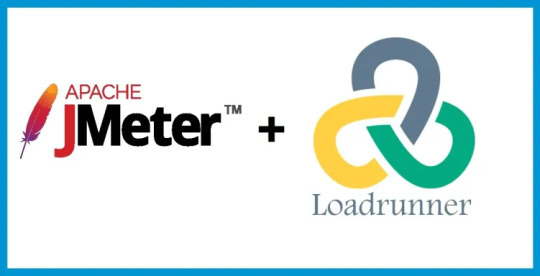
Performance checking out is essential for comparing the reaction time, scalability, reliability, speed, and aid utilization packages and net offerings below their anticipated workloads. The software program marketplace presently has diverse overall performance checking out gear. Nevertheless, whilst we talk of overall performance checking out gear, Apache Jmeter and Micro Focus LoadRunner (former HP LoadRunner) are the 2 names that routinely come to mind. Both those gear paintings nicely for detecting insects and locating obstacles of software program packages with the aid of using growing their load. But in this text we additionally would like to inform approximately our in-residence device Boomq.io. A clever manner to find out which device is applicable on your commercial enterprise wishes is to evaluate the important capabilities of Jmeter vs Loadrunner vs Boomq. In this text, we talk about the important variations among Jmeter, Loadrunner and Boomq. Jmeter Features in Performance and Load Testing Apache Jmeter has the subsequent key capabilities.
- GUI Design and Interface
- Result Analysis and Caches
- Highly Extensible Core
- 100% Java scripted
- Pluggable Samplers
- Multithreading Framework
- Data Analysis and Visualization
- Dynamic Input
- Compatible with HTTP, HTTPS, SOAP / REST, FTP, Database through JDBC, LDAP, Message-orientated middleware (MOM), POP3, IMAP, and SMTP
- Scriptable Samplers (JSR223-well matched languages, BSF-well matched languages, and BeanShell)
Pros and Cons of the Jmeter Application Jmeter is a sturdy overall performance checking-out device with numerous awesome capabilities. However, the utility nevertheless has many professionals, in addition to cons. Jmeter Advantages Here are a few key benefits that stand out the most. Available free of price Data extraction in famous reaction formats, including JSON, XML, HTML, and many others Although the Apache Jmeter has numerous benefits, it additionally has some shortcomings, which might be noted below: Doesn`t assist JavaScript so it doesn`t assist AJAX requests with the aid of using an extension Memory intake for the utility may be excessive whilst utilized in GUI mode After a sure limit, excessive reminiscence intake reasons mistakes for a big range of customers Can be hard to check complicated packages the use of JavaScript or dynamic content, including CSRF tokens. Less gifted than paid overall performance checking out gear including LoadRunner What is LoadRunner? HP Loadrunner (now Micro-Focus Loadrunner) is an especially state-of-the-art software program overall performance checking out a device that detects and stops overall performance troubles in net packages. It makes a specialty of detecting bottlenecks earlier than the utility enters the implementation or the deployment phase. Similarly, the device is extraordinarily useful in detecting overall performance gaps earlier than a brand-new gadget is applied or upgraded. However, Loadrunner isn't restrained from checking out net packages or offerings. The utility is likewise optimized for checking out ERP software programs, and legacy gadget utility, in addition to Web 2. zero technology. Loadrunner allows software program testers to have complete visibility over their gadget`s cease-to-cease overall performance. As a result, those customers are capable of examining every factor for my part earlier than it is going to stay. At the same time, Loadrunner additionally offers its customers especially superior forecasting capabilities for forecasting prices for up-scaling utility ability. By exactly forecasting prices associated with each software program and hardware, it's miles less difficult to decorate the ability and scalability of your utility. Loadrunner isn't open source and is owned by the era-large Hewlett Packard. Therefore, the code of the utility isn't to be had by customers. However, because the utility already gives many superior and excessive-stage checking-out capabilities, it isn`t essential to customize present capabilities. Loadrunner Features in Performance and Load Testing
#software testing training#unicodetechnologies#automation testing training in ahmedabad#manual testing
0 notes
Text
7 Powerful Frameworks to Boost Your .NET Skills

.NET development services are growing fast. Businesses need solid, reliable applications, and .NET framework gives developers the tools to build them. But learning .NET isn’t just about writing code. It’s about using the right frameworks to speed up development, simplify tasks, and improve performance.
Many developers, even those working in a .NET development company, don’t explore all the options. They stick to what they know. That’s fine, but if you want to be efficient, you need to use the right tools. Whether you're a beginner or an expert, these seven frameworks will help you write better code and build stronger applications.
1. ASP.NET Core – The Go-To for Web Development
Web apps need to be fast, scalable, and secure. That’s why ASP.NET Core is a must. It’s an open-source framework, designed to handle modern web development needs. Unlike the old ASP.NET, it's cross-platform, meaning you can run it on Windows, macOS, and Linux.
With ASP.NET Core, you get built-in dependency injection, middleware support, and a flexible hosting model. This makes it great for microservices and APIs. If you’re into web development and working with a .NET development company, this is a framework you need to know.
2. Entity Framework Core – Say Goodbye to SQL Headaches
Database management can be tricky. Writing SQL queries by hand is time-consuming. That’s where Entity Framework Core (EF Core) helps. It’s an Object-Relational Mapper (ORM) that lets you interact with databases using C#.
Instead of writing complex SQL queries, you work with objects. Need to fetch data? Just call a method. Need to update records? Modify the object and save changes. It handles everything in the background.
If you work with .NET development services, mastering EF Core can save you hours of work. It supports multiple database providers like SQL Server, MySQL, and PostgreSQL, making it a flexible choice.
3. Blazor – Build Web Apps with C# Instead of JavaScript
Most web apps use JavaScript. But what if you could use C# instead? That’s what Blazor does. It’s a framework that lets you build interactive web UIs using C#.
With Blazor, you don’t need JavaScript for client-side logic. You can write everything in C#, and it runs in the browser using WebAssembly. This makes it easier for developers who already know C# but don’t want to learn JavaScript frameworks.
Companies offering .NET development services are using Blazor for single-page applications (SPAs) because it simplifies development and improves performance.
4. MAUI – The Future of Cross-Platform Mobile and Desktop Apps
Building mobile and desktop apps can be complicated. You need different codebases for Android, iOS, Windows, and macOS. .NET MAUI (Multi-platform App UI) solves this by letting you write one codebase that runs on all these platforms.
It replaces Xamarin.Forms and brings better performance, modern UI controls, and easier integration with native APIs. If you’re working at a .NET development company or want to create mobile apps with C#, MAUI is worth learning.
5. Dapper – When You Need a Fast, Lightweight ORM
While Entity Framework Core is powerful, sometimes you need something faster. That’s where Dapper comes in. It’s a micro-ORM that runs raw SQL queries but maps results to C# objects.
Because it doesn’t track changes like EF Core, it’s faster. If you’re working with high-performance applications or large datasets, Dapper is a great choice. It’s widely used in .NET development services for applications that need speed and efficiency.
6. Hangfire – Background Processing Made Simple
Some tasks shouldn’t run while users wait. Things like sending emails, processing payments, or generating reports work better in the background. Hangfire lets you schedule and manage these background jobs easily.
Instead of setting up complex services, you just install Hangfire and let it handle the work. If you're building apps for a .NET development company, this can improve performance and scalability.
7. AutoMapper – Eliminate Boilerplate Mapping Code
Mapping objects in C# can be repetitive. You often write code just to transfer data from one object to another. AutoMapper removes this hassle by handling object-to-object mapping automatically.
For example, if you need to map a database entity to a DTO (Data Transfer Object), AutoMapper does it for you. This reduces errors and saves time, making it useful for developers working in .NET development services.
Why These Frameworks Matter
If you want to become a better .NET developer, you need the right tools. These frameworks help you:
Write cleaner code – Less repetition, more automation.
Improve performance – Faster execution, better database handling.
Save time – Simplify development, reduce manual work.
When businesses hire .NET developers, they expect them to know these tools. Learning them not only makes your job easier but also helps you stay competitive.
Final Thoughts
.NET is huge, but knowing .NET framework isn’t enough. The best developers understand how to use the right frameworks for the right tasks. Whether you’re building web apps, mobile applications, or enterprise systems, these frameworks will help you code smarter and work faster.
If you’re looking for .NET development services or need to hire .NET developers, working with a team that knows these frameworks can make a big difference.
#DotNetFrameworks#LearnDotNet#DotNetDevelopment#TechSkills#WebDevelopment#DotNetCore#ProgrammingTips#CSharpDevelopment#BackendDevelopment#SoftwareDevelopment
0 notes
Text
Why Java Spring Boot is Ideal for Building Microservices

In modern software development, microservices have become the go-to architecture for creating scalable, flexible, and maintainable applications. Java full-stack development is one of the most popular frameworks used for building microservices, thanks to its simplicity, powerful features, and seamless integration with other technologies. In this blog, we will explore why Java Spring Boot is an ideal choice for building microservices.
What are Microservices?
Microservices architecture is a design pattern where an application is broken down into smaller, independent services that can be developed, deployed, and scaled individually. Each microservice typically focuses on a specific business functionality, and communicates with other services via APIs (often RESTful). Microservices offer several advantages over traditional monolithic applications, including improved scalability, flexibility, and maintainability.
Why Spring Boot for Microservices?
Spring Boot, a lightweight, open-source Java framework, simplifies the development of stand-alone, production-grade applications. It comes with several features that make it an excellent choice for building microservices. Here are some key reasons why:
1. Rapid Development with Minimal Configuration
Spring Boot is known for its "convention over configuration" approach, which makes it incredibly developer-friendly. It removes the need for complex XML configurations, allowing developers to focus on the business logic rather than boilerplate code. For microservices, this means you can quickly spin up new services with minimal setup, saving time and increasing productivity.
Spring Boot comes with embedded servers (like Tomcat, Jetty, and Undertow), so you don’t need to worry about setting up and managing separate application servers. This makes deployment and scaling easier in microservices environments.
2. Microservice-Friendly Components
Spring Boot is tightly integrated with the Spring Cloud ecosystem, which provides tools specifically designed for building microservices. Some of these key components include:
Spring Cloud Config: Centralizes configuration management for multiple services in a microservices architecture, allowing you to manage configuration properties in a version-controlled repository.
Spring Cloud Netflix: Includes several tools like Eureka (for service discovery), Hystrix (for fault tolerance), and Ribbon (for client-side load balancing), which are essential for building resilient and scalable microservices.
Spring Cloud Gateway: Provides a simple, effective way to route requests to different microservices, offering features like load balancing, security, and more.
Spring Cloud Stream: A framework for building event-driven microservices, making it easier to work with messaging middleware (e.g., RabbitMQ, Kafka).
These tools help you quickly build and manage your microservices in a distributed architecture.
3. Scalability and Flexibility
One of the main reasons organizations adopt microservices is the ability to scale individual components independently. Spring Boot’s lightweight nature makes it an ideal choice for microservices because it enables easy scaling both vertically (scaling up resources for a single service) and horizontally (scaling across multiple instances of a service).
With Spring Boot, you can run multiple instances of microservices in containers (e.g., Docker) and orchestrate them using platforms like Kubernetes. This makes it easier to handle high traffic, optimize resource usage, and maintain high availability.
4. Fault Tolerance and Resilience
In a microservices architecture, failures in one service can affect others. Spring Boot provides built-in mechanisms for handling fault tolerance and resilience, which are critical for maintaining the integrity and uptime of your application. With Spring Cloud Netflix Hystrix, you can implement circuit breakers that prevent cascading failures, providing a more robust and fault-tolerant system.
By using tools like Resilience4j, Spring Boot makes it easier to implement strategies like retries, timeouts, and fallbacks to ensure your services remain resilient even when some of them fail.
5. Easy Integration with Databases and Messaging Systems
Microservices often require interaction with various data stores and messaging systems. Spring Boot makes this integration straightforward by providing support for relational databases (like MySQL, PostgreSQL), NoSQL databases (like MongoDB, Cassandra), and message brokers (like RabbitMQ, Kafka).
With Spring Data, you can easily interact with databases using a simplified repository model, without having to write much boilerplate code. This enables microservices to manage their own data stores, promoting the independence of each service.
6. Security Features
Security is critical in microservices, as services often need to communicate with each other over the network. Spring Security provides a comprehensive security framework that integrates well with Spring Boot. With Spring Security, you can secure your microservices with features like:
Authentication and Authorization: Implementing OAuth2, JWT tokens, or traditional session-based authentication to ensure that only authorized users or services can access certain endpoints.
Secure Communication: Enabling HTTPS, encrypting data in transit, and ensuring that communications between services are secure.
Role-Based Access Control (RBAC): Ensuring that each microservice has the appropriate permissions to access certain resources.
These security features help ensure that your microservices are protected from unauthorized access and malicious attacks.
7. Monitoring and Logging
Monitoring and logging are essential for maintaining microservices in a production environment. With Spring Boot, you can easily implement tools like Spring Boot Actuator to expose useful operational information about your microservices, such as metrics, health checks, and system properties.
In addition, Spring Cloud Sleuth provides distributed tracing capabilities, allowing you to trace requests as they flow through multiple services. This helps you track and diagnose issues more efficiently in a microservices architecture.
Conclusion
Java full-stack development provides a solid foundation for building microservices, making it an excellent choice for developers looking to implement a modern, scalable, and resilient application architecture. The framework’s ease of use, integration with Spring Cloud components, scalability, and security features are just a few of the reasons why Spring Boot is an ideal platform for microservices.
As a Java full-stack development, understanding how to build microservices with Spring Boot will not only enhance your skill set but also open doors to working on more complex and modern systems. If you’re looking to develop scalable, flexible, and fault-tolerant applications, Java Spring Boot is the right tool for the job.
This concludes the blog on "Why Java full-stack development is Ideal for Building Microservices". Let me know if you'd like to continue to the next topic!
0 notes
Text
Introduction to Robot operating system
November 28, 2023
by dorleco
with no comment
Autonomous Vehicle Technology
Edit
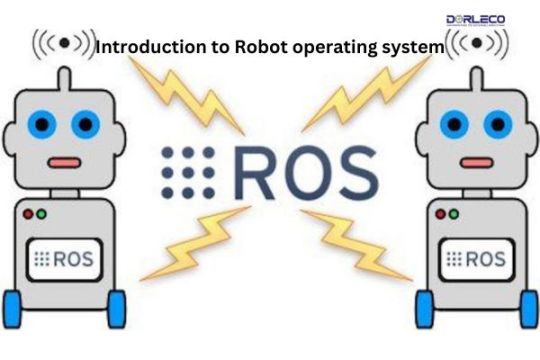
Introduction
The open-source middleware system known as the Robot Operating System, or ROS for short, is used to create robotic software. It offers a collection of tools and frameworks that make it easier to create sophisticated and reliable robot applications. Open Robotics is currently responsible for maintaining ROS, which was first created by Willow Garage, a robotics research group.
Key features of ROS include:
Middleware Communication: ROS enables communication between various robotic system components. It facilitates information flow between nodes (separate software processes) using a publish/subscribe messaging system. In order to coordinate different operations inside a robotic system, communication is essential.
Package Management: Resources such as libraries, executables, configuration files, and other files are arranged into packages by ROS. This modular design streamlines the development process and encourages code reuse.
Hardware Abstraction: ROS gives programmers the ability to build code that is not dependent on the particular hardware platform by providing hardware abstraction. The creation of scalable and portable robotic applications is made possible by this abstraction layer.
Device Drivers: ROS comes with a number of device drivers for different robotic platforms, actuators, and sensors. The incorporation of additional devices into a robotic system is made easier by this pre-built support for standard hardware components.
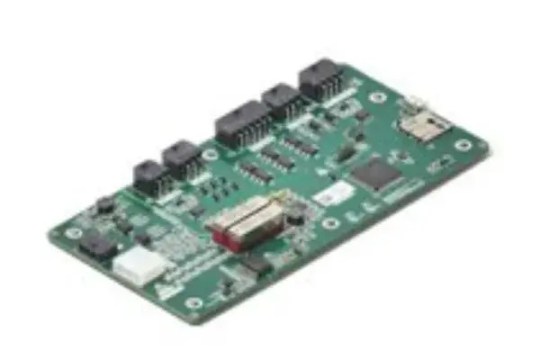
Tools for Visualization: Robotic system monitoring, debugging, and visualization are all included in ROS. Tools that assist developers in comprehending and troubleshooting the behavior of their robots include the simulator Gazebo, the RQT graphical user interface, and the 3D visualization tool RViz.
Community Support: The lively and engaged community of ROS is one of its strongest points. Around the world, developers build and share packages, guides, and best practices as part of the ROS ecosystem. This cooperative setting encourages creativity and speeds up the creation of robotic applications.
Flexibility & Extensibility: ROS is made to be both extendable and adaptable, enabling developers to alter and expand its features to suit their own requirements. Because of its adaptability, ROS may be used for a variety of robotic applications, ranging from commercial goods to research prototypes.
Programming Languages Supported: C++, Python, and Lisp are just a few of the languages that ROS supports. Because of this flexibility, developers can utilize their most familiar language for different parts of their robotic applications.
Benefits of Robot operating system
Numerous advantages provided by the Robot Operating System (ROS) contribute to its acceptance and popularity in the robotics industry. The following are some main benefits of using ROS:
Community-driven and Open Source: ROS is an open-source framework, which permits unrestricted modification and redistribution of its source code. Within the international robotics community, cooperation and knowledge exchange are encouraged by ROS’s open nature. Its development is supported by developers all over the world, creating a rich ecosystem of resources, libraries, and packages.
Modularity and Reusability: The architecture of ROS is modular, with robotic software arranged into packages. Because of its modular design, which encourages code reuse, developers can more easily utilize pre-existing components to create new robotic applications. This quickens the development process and raises the software’s general quality.
Middleware for Communication: ROS offers a communication middleware that facilitates easy communication between various robotic system components. By using a publish/subscribe approach, this middleware facilitates easy information sharing between nodes. The coordination of several sensors, actuators, and algorithms within a robot is contingent upon this communication method.
Hardware Abstraction: ROS enables developers to write code that is not dependent on the particular hardware platform by abstracting the hardware layer. By offering a standardized interface for dealing with sensors, actuators, and other hardware components, this abstraction streamlines the development process. Additionally, it improves portability, which facilitates the adaptation of robotic software to various hardware setups.

Rich Set of Tools: Robot Development, Debugging, and Monitoring are made easier with the many tools that ROS provides. Robot behavior is better understood by developers because of visualization tools like RViz, debugging tools like RQT, and simulators like Gazebo, which facilitate the analysis and optimization of applications.
Device Drivers: For typical sensors and actuators, ROS comes with a large selection of pre-built device drivers. Developers can save time and effort by using this collection of drivers to make the integration of new hardware into robotic systems simpler.
Scalability: Because of its scalable nature, ROS can be used for a variety of robotic applications, ranging from small-scale research prototypes to massive industrial robots. Because ROS is modular and versatile, developers can expand their applications according to the requirements and complexity of the robotic system.
Support for Several Programming Languages: C++, Python, and Lisp are just a few of the languages that ROS supports. This language flexibility enables the integration of existing codebases written in many languages and accommodates developers with varying language preferences.
Simulation Capabilities: Before implementing ROS on real robots, developers can test and validate their robotic algorithms in a simulated environment thanks to its good integration with simulators such as Gazebo. Error risk is decreased with simulation, which can also expedite development.
Educational Resource: ROS is a great educational tool that lets hobbyists, researchers, and students learn about and work with robotics. Both novice and seasoned developers can use ROS because of its wealth of tutorials, documentation, and friendly community.
Drawbacks of Robot operating system
The Robot Operating System (ROS) has many benefits, but users may also run across some issues and problems with it. When thinking about using ROS for a specific robotic application, it’s critical to be aware of these constraints. The following are a few disadvantages of ROS:
Learning Curve: For those new to robotics and software development, in particular, ROS has a steep learning curve. Users may require some time to become skilled in comprehending and utilizing the different components and concepts inside ROS due to the system’s overwhelming complexity.
Resource-Intensive: ROS has the potential to be a resource-intensive program, using a large amount of RAM and computing power. Applications using limited resources, like lightweight robots or tiny embedded devices, may find this concerning.
Performance in Real Time: The original architecture of ROS did not consider real-time applications. Despite recent improvements to real-time capabilities, ROS might not be appropriate for applications like high-speed control systems that demand incredibly low latency responses.
Absence of Standardization: Although commonly utilized, ROS is not strictly standardized in some sectors. Similar functionality may be implemented slightly differently by different developers, which could cause compatibility problems when merging packages from multiple sources.
Security Issues: Because ROS is an open-source framework, security issues could arise. When using ROS in environments where security is a major concern, like robotics applications in the medical or defense industries, users must exercise caution.
Limited Industry Adoption: Although ROS is widely used in academia and research, its uptake in some companies, especially those with safety-critical applications, may be restricted. Industries with strict safety regulations could need more procedures for validation and verification.
Not Suitable for All Robotic Systems: Not every kind of robotic system is a good fit for ROS. For instance, the full potential of ROS may not be greatly beneficial for specialized or simple robots with low processing requirements, adding needless complexity.
Dependency Management: As the number of packages and their versions rises, it might be difficult to maintain dependencies across various ROS packages. Integration problems may arise from package version incompatibilities.
Limited Real-world Deployment Tools: Although ROS offers great simulation tools such as Gazebo, there could be difficulties when moving from simulation to real-world deployment. It might be challenging to create sturdy, dependable robotic systems that function flawlessly in the real world.

Continuous Evolution: The frequent release of new updates and versions of ROS may make it more difficult to sustain and maintain current robotic systems over the long run. There may be compatibility problems between various ROS versions.
Conclusion:
In conclusion, the Robot Operating System (ROS) stands as a powerful and versatile framework that has significantly contributed to the advancement of robotics research, development, and deployment. Its open-source nature, modular architecture, and extensive set of tools have propelled ROS into the forefront of the robotics community.
ROS has been instrumental in fostering collaboration and knowledge-sharing among developers, leading to a vibrant ecosystem of packages and libraries. The benefits of modularity and reusability have allowed for the creation of complex robotic systems with greater ease and efficiency. The middleware communication system enables seamless interaction between various components, contributing to the coordination of sensors, actuators, and algorithms within robots.
Despite its strengths, ROS does come with certain drawbacks, including a steep learning curve, resource intensity, and challenges in real-time applications. However, these limitations need to be weighed against the benefits, and developers must carefully consider the specific requirements of their projects.
In essence, ROS has played a pivotal role in democratizing robotics, providing a platform for both researchers and industry professionals to experiment, collaborate, and innovate. As technology continues to evolve, ROS is likely to adapt and remain a key player in shaping the future of robotics. Its impact on education, research, and industry applications underscores its significance in the broader landscape of robotic systems development.
#Robotoperatingsystem#Transmissioncontrol#Dorleco#EngineControlUnit#FuelEfficiency#InternalCombustionEngine#BatteryManagement#autonomousvehicles
0 notes
Text
Gradio AI Agents: The Speedy App Creators

Gradio-powered Generative AI Agents build apps quickly
AI is now the go-to technology for quickly expanding, powering, and modernizing apps in the era of low-code and no-code application development. Leading companies are scrambling to develop new apps more quickly as a result of the constantly changing technological landscape, which offers new potential and opportunities to connect and engage with consumers as well as optimize and infuse insights and experiences.
AI-infused application development is increasingly turning into a must to succeed in today’s market, whether it’s to adopt generative AI technologies or keep their competitive edge.
We will go over how to integrate Gradio, an open source frontend framework, with Vertex AI Conversation in this blog. Vertex AI Conversation enables developers to easily create proof-of-concept apps for generation AI while using the capabilities of conversational AI technologies.
Organizations may use these two technologies to deliver a proof-of-concept (PoC) that has an engaging, low-lift generative AI experience that will impress your consumers and motivate your development team.
Chatbots that are powered by Gen AI may deliver insightful and relevant interactions by learning from the unstructured data that belongs to your business. The Gradio front-end framework offers a simple way to create unique, interactive apps that let programmers quickly share and showcase machine learning models.
Vertex AI Dialogue
One of Gradio’s framework’s key features is the ability to build demo applications on top of your models with an intuitive web interface so that anybody can use them and provide your company right away feedback.
Integrating a Gradio app with a Vertex AI Conversation-based generative AI agent opens essential capabilities that let you customize and adapt to your particular requirements and user input. With the help of programmability, you can quickly demonstrate your chatbot’s capabilities and implement extensive personalisation and contextualization into discussions with clients.
Gradio
Businesses want a user-friendly interface to assess their machine learning models, APIs, or data science workflows in light of the tremendous growth in generative AI. A common use for Large Language Models (LLMs) is in chatbots. Businesses are using conversational interfaces like voice-activated chatbots or speech bots because interacting with LLMs seems intuitive and natural. Since speaking is considerably simpler than typing, voice bots are becoming more and more popular.
To communicate your machine learning model, API, or data science workflow with customers or colleagues, you can quickly create interfaces like chatbots, voice-activated bots, and even fully-fledged web apps using the open-source Python framework Gradio. Gradio enables you to create rapid demos and distribute them with just a few lines of Python code. Here, you can find out more about Gradio.
Introducing a Vertex AI Conversation-integrated Gradio application
The data ingestion tools of Vertex AI Conversation analyze your information to produce a virtual agent that is powered by LLMs. To enable a relevant and intimate engagement with end users, your agent may then build dialogues utilizing data from your company. With the Gradio framework, showcasing your application is simpler than ever thanks to seamless deployment through a web browser.
What it does
Using a number of data sources, chatbots may be created using Gradio that can respond to user inquiries. To do this, you might construct a middleware that makes use of Vertex AI Conversation to examine user input and provide an agent response. After that, the agent might look for solutions in a repository of documents, such as the knowledge base maintained by your business.
When the agent discovers the solution, it has the ability to summarize it and show it to the user in the Gradio app. In order for the user to learn more, the agent may additionally offer links to the sources of the response.
Here is a more thorough breakdown of each action:
The chatbot receives a query from the user.
The middleware uses the Dialogflow API to transmit the query to the genAI agent.
The genAI agent explores the data storage for solutions.
If the agent discovers a solution, it describes it and gives references.
The middleware uses the Dialogflow API to transmit the summary and links to the Gradio app.
The Gradio app shows the user a summary and links.
The high level architecture shown in the accompanying diagram can serve as a basic building block for an MVP with key functionality.
The components of the chatbot architecture are described in the paragraphs that follow.
Backend authentication:
Confirms the identity of the user.
All requests and responses are orchestrated by middleware to provide answers.
Answer generation:
Produces replies from a virtual agent based on enterprise data. The foundational elements or goods are Vertex AI.
Vertex AI Conversation:
Development of an intelligent agent that can comprehend and reply to natural language.
Dialogflow CX:
Dialogflow is used to manage conversations.
Enterprise data storage using the cloud
Data Store:
A repository for index data that Vertex AI Conversation automatically creates in order to index corporate data and enable Dialogflow to query it.
Speech to Text:
Transforms user voice recordings into text that is then sent to Generate Answer.
A voice-activated chatbot that can comprehend both keyboard inputs and voice-based communications is offered by the Gradio Frontend Chatbot. The Gradio framework is used to create the bot’s user interface.
Speech Recording:
Allows users to communicate via voice messages.
0 notes
Text
Sandeep Nailwal, the co-founder of Polygon Labs, has proposed a new zero-knowledge L2 solution to support the growth of ApeCoin and the ApeCoin community. ApeChain will be built in conjunction with Polygon Labs through a formal AIP. The ApeChain Proposal Nailwal posted the proposal through the initiation of a new proposal idea (AIP) on the ApeCoin DAO forum. The proposal promotes the joint development of a Layer2 ApeChain, which would be based on zero-knowledge technology, helping accelerate the growth and development of the ApeCoin ecosystem. According to the proposal, ApeCoin would be developed using the Polygon CDK. This would ensure added focus on modularity, ease of use, reduced costs, enhanced security, high customizability, instant withdrawals, and shared liquidity. The proposal also suggests collaboration with the Polygon ecosystem and recommends creating an independent fund in the ApeCoin treasury. This fund would be used to promote the development of ApeCoin-related projects and ApeChain-related public services. The post read, “Polygon Labs proposes that ApeCoin DAO develop and maintain its own zero-knowledge powered Layer-2 (“zk-L2”) with the Polygon Chain Development Kit (“CDK”) to accelerate the growth and development of the ApeCoin ecosystem.” It further added, “Such an endeavor would include (1) a dedicated ApeCoin zk-L2 chain (“ApeChain”) built and maintained by an implementation partner that builds Web3 infrastructure and tooling products (“Implementation Partner”), (2) ecosystem collaboration with Polygon Labs and (3) a development fund from the ApeCoin DAO treasury to help stimulate the growth of ApeCoin-integrated projects (experiences, entertainment, games and consumer applications) and ApeChain-related public goods (middleware, marketplaces, and necessary infrastructure).” How The ApeCoin Ecosystem Would Benefit The ApeCoin community has long been contemplating migrating ApeCoin to its own chain to help the project scale properly. This was highlighted by Yuga Labs themselves in a post on X a few months ago. Yuga Labs had encouraged the DAO to think about migrating. However, the ApeCoin DAO voted to keep ApeCoin within the Ethereum ecosystem. However, Nailwal added that the possibility of an ApeCoin-specific chain still remains open. Nailwal stated in the proposal, “Here’s where this AIP comes in: to propose a dedicated ApeChain, using Polygon CDK 3, an open-source toolset developers can use to launch their own zk-powered L2 on Ethereum with little friction and an emphasis on modularity, built and maintained by an Implementation Partner.” Nailwal stated that ApeChain would provide the ApeCoin DAO and its members with potential sequencer fees and staking rewards for network validators while solving the ApeCoin’s scaling issues. Simply put, a dedicated chain would facilitate dedicated, ultra-premium, and inexpensive blockspace for any ApeCoin DAO-affiliated and/or -incubated experiences, entertainment, games, and consumer applications that could bring more users into the ApeCoin ecosystem. It would also act as an additional activity and help in the creation of all kinds of value (content, data, assets). The Polygon CDK has already seen considerable adoption, with several chains being developed. These include Gnosis Pay, Immutable zkEVM, Capx, Palm Network, Canto, Astar zkEVM, and several others. Polygon CDK’s popularity is primarily because it offers the highest degree of flexibility when scaling Ethereum while also ensuring security and decentralization. “ApeChain will provide the ApeCoin DAO with an efficient, secure, and decentralized execution environment upon which ApeCoin DAO projects can be built to help realize this mission. As a result, by virtue of ApeCoin DAO gaining composability and interoperability with the entire modular suite of Polygon solutions (including Polygon PoS, which will soon be upgraded to a zkEVM Validium 2, Polygon zkEVM, Polygon Miden, and various customizable L2
permutations using the CDK, together “Polygon Architecture”), the ApeCoin ecosystem will be primed for tremendous growth.” Disclaimer: This article is provided for informational purposes only. It is not offered or intended to be used as legal, tax, investment, financial, or other advice.
0 notes
Text

Everything that both dApp developers and DeFi users need on a single platform
Timesaving for developers
Difo Finance's middleware software technology enables developers to build fast and feature-rich decentralized applications with less code, allowing them to save time, effort, and project budgets.
Smart contract libraries for developers
Difo Finance's smart contract libraries mean that developers will no longer need to code smart contracts from scratch for every project they develop. This is because Difo Finance's smart contract library will include many open-source smart contracts.
#difofinance #difoswap #difolaunchpad #difodex #difo #difotoken #difocoin #DeFi #BTC #Bitcoin #crypto #DIFO @difofinance @difolaunchpad @difodex @difoswap
1 note
·
View note
Text
Build an E-Commerce website with MERN Stack
The Art of E-commerce: MERN Stack Development Demystified
In today's dynamic digital industry, making an e-commerce website with the help of a MERN app development company, requires a conscious and efficient strategy. The initial step is to utilize MongoDB, a NoSQL database, to store client data, order history, and product data. Its versatile schema architecture fulfills the constantly shifting prerequisites of e-commerce platforms. The backend framework, Express.js, ensures that HTTP requests are dealt with effectively and that solid APIs are laid out. It handles operations including data validation, authentication, and permission, which are fundamental for safe and smooth user experiences. The JavaScript library React, with its component-based design, drives the frontend. It makes it easier to make interfaces that are responsive, dynamic, and user-friendly. React's server-side rendering implementation improves SEO, bringing the website's prominence in search results.
Customer engagement is increased because of real-time features like quick cart updates and chat help that are made possible by Node.js. Utilizing "payment gateways," like Stripe or PayPal, provides safe transactions and encourages client certainty. Adaptability is a significant variable, especially for e-commerce businesses. The MERN stack's interoperability with microservices architecture and cloud deployment empowers smooth extension as the organization grows. Furthermore, integrating analytics and monitoring technologies makes it easier to notice client behavior, foster sales funnels, and spot problem areas.
From Concept to Conversion: MERN Stack's Role in E-commerce Success
In the modern digital environment, making an e-commerce website with the MERN (MongoDB, Express.js, React, Node.js) stack enjoys a few benefits. The MERN stack, which is eminent for its flexibility and durability, offers a complete solution for making feature-rich, versatile, and high-performance online retail systems. First off, React, a JavaScript framework, offers an ongoing intelligent experience and a fluid user interface that improves client engagement and retention. The component-based design of React makes it conceivable to rapidly make and maintain with unpredictable e-commerce interfaces. The non-obstructing, event-driven design ensures blazing-fast performance and adaptability. At the point when sales and promotions are active, e-commerce sites frequently need to deal with tremendous numbers of continuous visitors, which makes this fundamental. Agile development is upheld by MongoDB, a NoSQL database that gives adaptability in overseeing unstructured data. It empowers effective inventory management and customized product suggestions.
Express.js likewise gives a steady and secure backend foundation by smoothing out server-side activities. Its middleware design makes data validation, authentication, and authorisation simple. The open-source nature of the MERN stack supports a vibrant developer community, giving regular upgrades and accessibility of a large number of libraries and packages. Costs are diminished while development times are accelerated. React's server-side rendering ability and effective client-side routing help your site rank better in search results, which builds its discoverability. Also, seamless versatility as your e-commerce firm grows is ensured by MERN's compliance with cloud deployment and microservices architecture.
Beyond the Horizon: MERN Stack's Shaping of E-commerce Future
With the MERN (MongoDB, Express.js, React, Node.js) stack, creating e-commerce websites in the future is very innovative and brimming with potential. The MERN stack is strategically set up to adjust and prevail in the changing digital market as customer expectations keep on evolving. To further develop the user experience, artificial intelligence (AI) and machine learning (ML) will be urgent. A few AI-driven services that will become mainstream include chatbots for customer assistance, personalized shopping suggestions, and predictive analytics for inventory management. The MERN stack will give Progressive Web Apps (PWAs) more significance. For e-commerce platforms where an impeccable purchasing experience is essential, these applications offer near-native app experiences, including offline capability.
Voice commerce is turning out to be more famous, subsequently MERN stack developers will consolidate voice search and commands to keep up with the intensity of e-commerce websites. Voice-activated purchasing, empowered by devices like Google Assistant or Amazon's Alexa, will become commonplace. Online transactions will be safer and easier because of blockchain. Combination of blockchain will assist with providing chain management, guarantee the authenticity of products, and secure payment processing. Smart e-commerce solutions will be made conceivable by the Internet of Things (IoT). Customer interactions with e-commerce platforms will be reconsidered by smart mirrors in virtual changing rooms, IoT-empowered inventory management, and personalized in-store experiences via wearable technology.
Putting the Pieces Together: The Big Picture
All in all, utilizing the MERN stack to foster an e-commerce website requires an exhaustive understanding of every component's capability as well as cautious planning. The capacity to fabricate elite execution, adaptable, and feature-rich online shopping platforms that meet the changing requirements of the market is made conceivable by the contemporary technological stack. As a MERN app development company, we are a forerunner in the creation of MERN stacks and have a history of making reliable and versatile online solutions. We are the go-to choice for MERN stack development services because of our exceptionally qualified team of MERN professionals, who assure cutting-edge technology integration, flawless user experiences, and quick project delivery.
#mernstack#mern stack development#mernstackcompany#mernstackservices#mernstackagency#mernstackstudio
0 notes
Text
Java is a cross-platform framework used to create applications that run on smartphones and other small screen devices. According to a survey, Java is the second most used language for developing mobile applications. Mobile apps created with Java include some of the popular ones like Netflix, Twitter, Spotify and many more.

A modern method for creating GUI applications powered by APIs such as Swing, Abstract Windowing Toolkit (AWT), and JavaFX. Java allows for faultless desktop application design. Java has several fantastic benefits when used in desktop programs, like short learning curves, visual feedback, simultaneous display of many instances, and many more.
Java is uniquely suited for web development because it can work with many different systems. It enables us to build dynamic web apps that work with interfaces. JSP, Web Servers, Spring, and hibernate are some of the tools that make web development feasible.
Java language class-based and object-oriented is designed so that any program can be quickly executed with minimum dependencies. As we know Java technology is used to develop highly advanced applications for a variety of domains, from consumer devices to enterprise systems with singleton architecture.
Java has proven to be the most desirable choice for game development thanks to the presence of many open source frameworks. Popular games like Mission Impossible III, Minecraft, and Asphalt 6 are all developed in Java. It supports Dalvik and jMonkeyEngine virtual machines, which is a plus in creating 2 and 3 dimensional Android games.
A Java web application is a client-server based software application that is run by a client including email, online retail sales, and Wikipedia information. Servlets, jsp, jsf used to build web applications.
Java applications are enterprise applications related to middleware applications. All companies use Java technology and services to enable their software applications and hardware systems. Therefore, we call it an enterprise application. Enterprise applications are designed primarily for enterprise sites such as banking systems.
TCCI computer classes provide the best training in Java application through different learning methods/media located in Bopal Ahmedabad and ISCON Ambli Road in Ahmedabad.
Course Duration: Daily/2 Days/3 Days/4 Days
Class Mode: Theory With Practical
Learn Training: At student’s Convenience
For More Information:
Call us @ +91 9825618292
Visit us @ http://tccicomputercoaching.com
#computer classes in bopal Ahmedabad#computer classes in ISCON Ambli Road Ahmedabad#java coaching institute in bopal Ahmedabad#java coaching institute in ISCON Ambli Road Ahmedabad#java courses in bopal Ahmedabad
0 notes
Text
10 Most Popular NodeJS Frameworks of 2021
Every year, we highlight the best NodeJS frameworks that make developers' jobs easier. Just as a quick reminder, Nodejs was first introduced in 2009 and is itself an open-source cross-platform framework built on Chrome's V8 JavaScript engine.
So, what are some of the best NodeJS frameworks for 2021? I'm glad you asked! Here's a quick rundown and analysis of some great features.

List of 10 Most Popular Frameworks in 2021
1. Express.js
Express.js is a Node.js web application framework that provides robust features like environment-aware smart routing and advanced response handling for developing, building, and running web apps quickly while also providing an excellent standard to most Node.JS applications today!
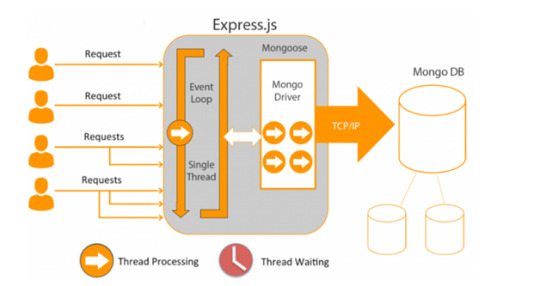
source:https:/www.octalsoftware.com
Express.js features and benefits:
Create handlers for requests with different HTTP verbs at different URL paths.
Integrate by inserting data into templates and setting common web application settings like port to use, location of templates used rendering responses.
Add additional request processing “middleware” any point within the handling pipeline
2. LoopBack
LoopBack is a popular node.js framework that gives developers an easy-to-use CLI and API explorer to make building their applications easier.
With Loopback, you can create great apps faster with the help of different features like dynamic links between devices or browsers as well as support for Android, iOS, and Angular SDKs out of the box!
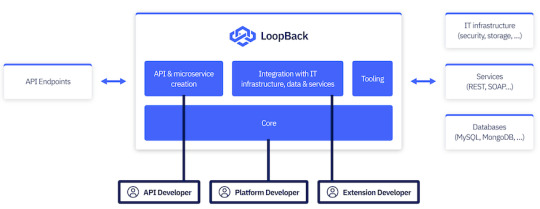
source:https://loopback.io/
LoopBack features and benefits:
We can share models with server and client.
Saves you manual work.
It has built in ORM
It is backed by IBM
It also used in user and access role features
It give strength of full stack development
It can be used in various scenarios, including CRUD operations (accessing databases) and integrating with other infrastructures. It's incredibly easy to use as it only requires a single line of code!
3. Socket.io
Socket.io is a full-stack platform that offers developers the ability to use many programming languages and interact with virtually any service quickly, allowing them to build anything they want on it. The API provides an excellent speed in development as well as durability so businesses such as IBM trust this framework for their business needs.
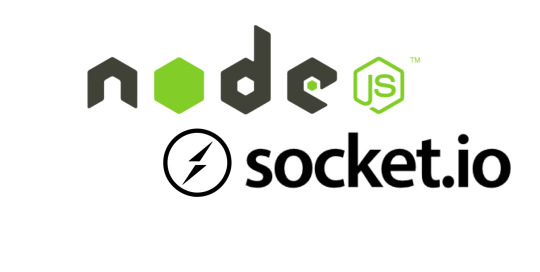
source:https://blog.bitsrc.io/
Socket.io features and benefits:
The framework offers a cutting-edge feature that will keep your users connected with an auto reconnection support. If they are disconnected, the connection will quickly restore automatically until it is manually stopped by you!
Socket.io adds metadata to each packet so users can seamlessly connect with the other side of an ongoing conversation.
Socket.io uses WebSockets, which run on the top of other protocols for faster and more efficient communication between browsers and servers with metadata added to each packet
4. Sail.js
Sail is a Model-View-Controller (MVC) web application framework that facilitates the wide range of WebSocket integration features.
Socket.io provides it with its communication channel between clients and servers to facilitate real-time data exchange in both directions on browsers with no need for polling refresh or manual queries updates when data changes at server end from client side page load event trigger automatically.
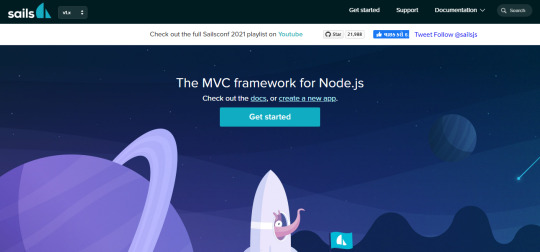
source:https://sailsjs.com/
Sail.js features and benefits:
Automatic generation of Rest-APIs.
Support web socket
Hasslesfree handling of HTTPS requests.
Easy integration of Middleware
5. Koa.js
Koa.js is one of the more dominant Node.js frameworks that can make building different web services, aka APIs super fun and easy since it efficiently deals with HTTP middleware with a stack-like method!
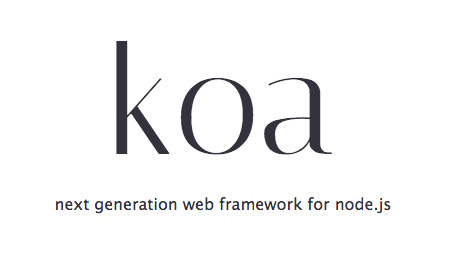
source:https://koajs.com/
Koa.js features and benefits:
This awesome framework is a lightweight version of Express!
He is the best mechanic in town. He can handle any job, no matter how complex or easy.
Cascading middleware has made it possible for software to personalize the user experience.
6. Hapi.js
Hapi is a framework that can support the development of complicated web applications with its proxy servers, REST APIs, and other types of desktop apps. It's reliable due to both technical aspects like reliability systems as well as security measures such as SSL encryption. This makes it perfect for large teams managing multiple projects simultaneously who need an efficient process in place!
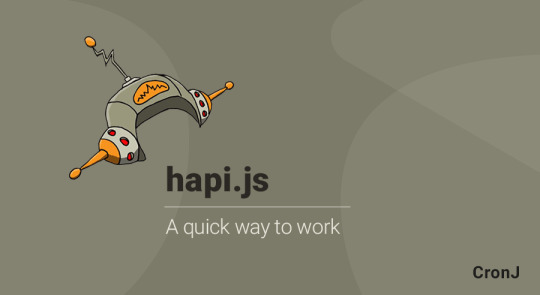
source:https://hapi.dev/
Hapi.js features and benefits:
Hapi is a powerful and reliable web server commercial-centered framework that offers enterprise level security when building applications.
It can handle large teams of programmers working simultaneously on multiple tasks while also
provide great development support for those looking to build their own proxy servers, REST APIs, or desktop apps.
7. Adonis.js
Adonis.js is an elegant, stable Node.JS framework that makes it easy to write scalable web applications from scratch using the MVC paradigm and with a modular design philosophy in mind - making this your perfect choice for writing highly-stable server-side code without sacrificing elegance or beauty!
AdonisJS is the best framework to start developing with. Don't waste your time downloading and assembling hundreds of packages together, use AdonisJS from day one!
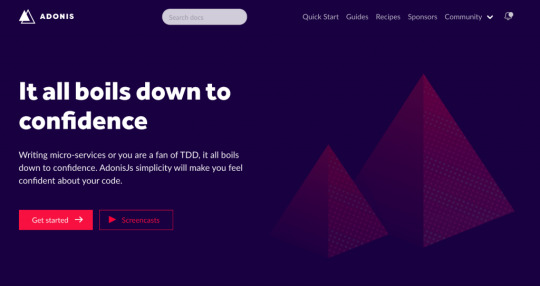
source:https://adonisjs.com
Adonis.js features and benefits:
Multi transport mailer
Organized pattern with a folder structure
Secure and straightforward file upload.
Easier validation of user input
Facility to write custom functional test scripts
Supportive and friendly community
8. Derby.js
Derby.js is a framework that makes it easy to create mobile and web applications in both node.js and browsers.
The main feature of this tool is its synchronization across clients and servers, which allows for constant updates from one user to another without having any latency issues or lag time between messages received by different users on either side of an application's network - no matter where they are residing at the moment!
Derby.js features and benefits:
MVC Architecture for both server side & client side.
Our ShareDB platform provides you with seamless data synchronization between your server and client in a way that’s both automatic and conflict-free.
With the help of automatic timing and faster support, multiple people can use a single application simultaneously.
Many people use it for their real-time collective applications because of its speed and ease.
9. Meteor.js
Meteor.js is a paradigm-bending web development framework that allows developers to build modern, cross-platform apps using just JavaScript and Node. It's compatible with the Web, iOS, Android or desktop devices so you can develop your app without worrying about writing native code for each platform separately!

source: https://www.meteor.com/
Meteor.js features and benefits:
Full stack solution
Easy integration with other frameworks
The cross platform framework, building rapid phototyping CLI.
Less requirement of coding web and mobile application
Allow using the same code for writing boath apps
10. Nest.js
Nest.js is a new framework that combines the benefits of functional programming with those from object-oriented and reactive programming to make it easier for developers to build scalable REST APIs in JavaScript, Typescript or both.
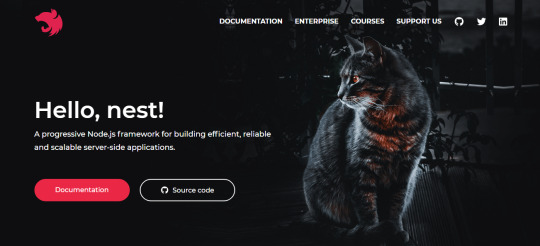
source: https://nestjs.com/
Nest.js features and benefits:
Easy to use, learn and master
Active codebase development and maintenance
Highly scalable and easy to maintain applications.
Large community and support team
Built for large scale enterprise applications
1 note
·
View note
Text
ZeroMQ was invented for stock trading
I listened to some guy in New York City talk about quant trading. I wondered aloud how quantitative trading performs compared to index funds that track the S&P500, and this was a logical question that sent me down one of my crazy Internet search paths. I kind of wondered why these people are so interested in C++.
I already asked someone at my own site, who explained that C++ can build middleware technology that’s much faster than its counterparts. The part I missed was how it could be applied to high-frequency trading. For a lot of use cases, the differences between C++ and something like Python are negligible. But in something like high-frequency trading, you need all the speed you can get.
I think. Python seems to still be popular in that space. Maybe I’m just looking at it from the outside.
Anyway, in this long path, I circled all the way back around to ZeroMQ. ZeroMQ was never built, as I had thought, to be that high-powered technology for a new Internet, freeing us from the corporate hold of the evil giants like Google and Amazon, ushering in a new age of free information. ZeroMQ was invented because some giant corporation commissioned it for stock trading. Zero is for Zero broker, as in the lead programmer was seriously weighing the trade-offs of eliminating a broker from peer-to-peer communication. That’s it. Everything else, from the dream of a new Internet to the lead programmer’s own idealism and eventual death by cancer, came after.
And it seems kind of naive, I guess...that story I had in my head. Amazon and Google aren’t evil, it’s just that a lot of us believe we could build a freer Internet if we fundamentally changed the way it worked. I liked that Hintjens used the brokerless paradigm as a metaphor for his dream of a sort of “distributed world,” but even that has its own trade-offs. He didn’t invent ZeroMQ, either. Sometime late in his project, before his death, the open source project they had started experienced a split. The reasons were maybe technical, or maybe political, and if they were the former it mostly came from the question of whether they should have implemented the whole thing in C or C++...but just that story alone kind of suggests all the things that can go wrong in an open source world. Yes, everyone is free to play in open source. But someone still has to write the code, there has to be a form of government. Naturally, there will be conflict.
I think I enjoyed reading Hintjens’ idealistic writings more than I enjoyed reading his ZeroMQ tutorial. I think that when I decided to share what I had learned about his life, as a random secondary source, it felt more meaningful to me than any related socket code I actually programmed. There are tremendous applications for ZeroMQ, but the most impressive things I have seen so far use it for high-frequency trading. If you want to build a new Internet, as some people are already doing, there are other technologies to consider.
But Hintjens was a great guy, and he did some great things, and he wrote a lot of books about the legacy he wanted to leave behind. I think that has value.
Quant trading. Hedge funds. High-frequency trading. Algorithmic trading. It’s always going to be interesting, I guess. In one place, I saw this world of money, and profits, and business, a place where everything has a price tag and you could value commodities like abstractions and buy and sell them without any physical transactions. It was like a game, it was fascinating. And then on the other side I saw this ideal world of technology, and all the things we could do with it.
Obviously, the two worlds existed in the same space. I didn’t think I’d see them come together exactly in this way.
1 note
·
View note
Text
Download and Install So Player on Firestick
Downloading and Installing an application on firestick is so simple and easy to do it in a minute. However So Player is not available on the Amazon App store So, you have to sideload So Player on Firestick. Just follow the steps below to sideload SO Player on Firestick in a minute.
What is So Player?
So Player is a free application available on the Internet that provides a platform to watch Streaming Content. However, It does not provide any Streaming content like Television shows, Movies, Radio Channels, VOD, and much more. So Player just acts as a middleware for IPTV/OTT Platform.
Is So Player Legal?
Yes, absolutely. Actually So Player is just a platform to watch the streaming content. It does not provide any Streaming content on its own. So, there is no issue with using So Player for firestick.
Some changes have to be done before sideloading an application on firestick. It just takes only a few steps to complete.
Step1: Turn on the Firestick.
Step2: Move on to the Settings.
Step3: In Settings, you can find My Fire TV or Device option.
Step4: In that, you can find Developer Option.
Step5: In Developer Option, you can find Apps from Unknown Sources and ADB Debugging. Just turn it ON.
Step6: A window appears on screen with a warning symbol. In that, Click on Turn ON.
That’s it. Your device is ready to sideload any application on firestick. Let’s move on to Download SOPlayer on Firestick. Because So Player is not available on the Amazon App store So, you have to sideload So player on Fire Tv. Actually, Sideloading So Player on Firestick has two methods and we have provided both the methods below. You can use any one method to Sideload So Player.
So Player is one of the best IPTV Players for Firestick which acts as a middleware for Firestick and IPTV Service Provider. Smart IPTV for Firestick is also one of the best IPTV for FIrestick. It is really very simple to use and access all the features of the So Player.
How to Setup So Player on Firestick/Fire TV?
Step1: Open So player from the Apps section on firestick.
Step2: In the So Player Home Screen, you can find three options namely, Pincode, Username/password & Refresh.
Step3: In that Select Pincode.
Step4: Now, Enter the Pincode of your region and click on Next.
Step5: In the next screen, you will be asked to enter the Provider ID that you got from the IPTV service provider.
Step6: Then Click on Next. It will redirect you to the Home Page of So player.
There you can find all the TV Shows, Movies, Live Channels, and much more from the IPTV provider. Then you can use the EPG to check out all the programs provided by your IPTV Service provider.
For more details on our products and services, please feel free to visit us at: Free sports Channels, movies online, online streaming tv, soplayer App TV, free movies online.
1 note
·
View note